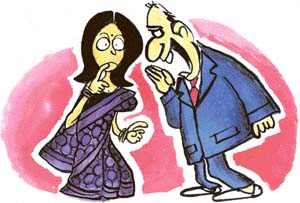Extending Reading: "It's Magical it's malleable, it's memory."
Memory is our ability to retain knowledge of past events. And selfhood is individuality or our uniqueness. “Memory is bedrock of the self,” from the statement memory represent experience and it is the factor that shape who we are which made us unique from others. Memories from the past shape how we think and our behaviors. Example in the article shows that we could also create our own memory by listening others. In the article a girl been told that she is the one who saw her mom die. After that she make up stories in her head about her mother death, but early one morning her brother told that she is not the one who saw her mother death but it is the other girl. This show that we could make up memory and memories could reflect our self.
The new discovery about memory I find most interesting is “memory is not a single entity residing in a single place.” I found it most interesting because we got tons of memories and our brain got no limit memory space. Even though we have forgotten some information but sometime it came back suddenly, so this shows that memory is not erased from our brain. Also the brain has a parallel processing in order to associate the memory with the person emotions.
In order for the brain to recall the information, many neuron are activated and neuron themselves are specialized for different types of memory. Homunculus crisis is a mystery that no one knows what triggers the neurons in our brain. And it leads to question such as “Who is thinking? Is memory remembering us?”
4. Which theory of dreams finds support in the experiments by Lynch?
Lynch’s experiment supports the biological dream theories of Hobson and Vertes. Lynch proves that rat memories improve during it sleep and the brain send particular impulse called theta waves. Vertes’s says that we dream to prevent our body from going into coma state. And Hobson’s says that our brain randomly send neural impulse which causes us to have random dreams.
5. How can some memories become indelible?
Some memories become indelible because during the encoding process that person got powerful emotions or during stress. During stress the stress hormone stimulates the heart and makes it pump faster and the muscle began to tense and this has effect on the neurons. And for powerful emotions, example we faced and very dangerous situation and scared us, this memory will be recorded in our brain and used it to be a knowledge incase of facing the same situation next time.
6. How can amnesia and repression be explained?
Repression is when we forgot something and later on it got retrieve. And amnesia is a loss of memory. Amnesia often occurs in an injury and repression believes to be involved in traumatic experience. Both repression and amnesia believe to be causes by the malfunction of the hippocampus, when hippocampus depicting words and pictures into our explicit memory.
7. Explain the following statement: "Memory is more reconstructive than reproductive."
Memory got lost through time, but we build our memory anytime. Memory could not be reconstructive because we seem to and new memory when times passes and the old memory will be changed in its detail. But memory could be reconstructive because we often made up our own memories such as the example of the number one answers.
8. What new paradigm of memory is now emerging?
The new paradigm of memory is now emerging memory is how our memory mixes with our emotions. It both contain true and false situation. And this memories will shape us of who be are.
9. After reading this article, what conclusions can you make about memory?
For me memory is one of the most important things in human life and it is also one of the most complex things and hard to explain. Many scientist studies about it but still they can’t found out who or what bring our memory back. After reading this memory article it made me learn many new things about our brain and ourselves, such as how we memorize things and why some people have difficulty memorizing.





